Side cases, saddlebags, panniers—whatever you choose, a good set of motorcycle luggage can add a ton of versatility to your two-wheel adventures. But depending on your specific bike, where you’re riding, and what you’re carrying, buying the best set of motorcycle cases isn’t as straightforward as you’d think.
So here’s an article to help you make the best choice for your bike.
What Do You Need to Carry?
The first thing you need to do is assess what you’re doing with the motorcycle and what you’ll need to carry.
Do you need to carry your work laptop on the commute? Does your bike do regular grocery runs? Are you overlanding and need to bring along a tent, tools, and a few days worth of clothes?
In short, figuring out what exactly you’ll be lugging around on your motorcycle is a crucial first step.
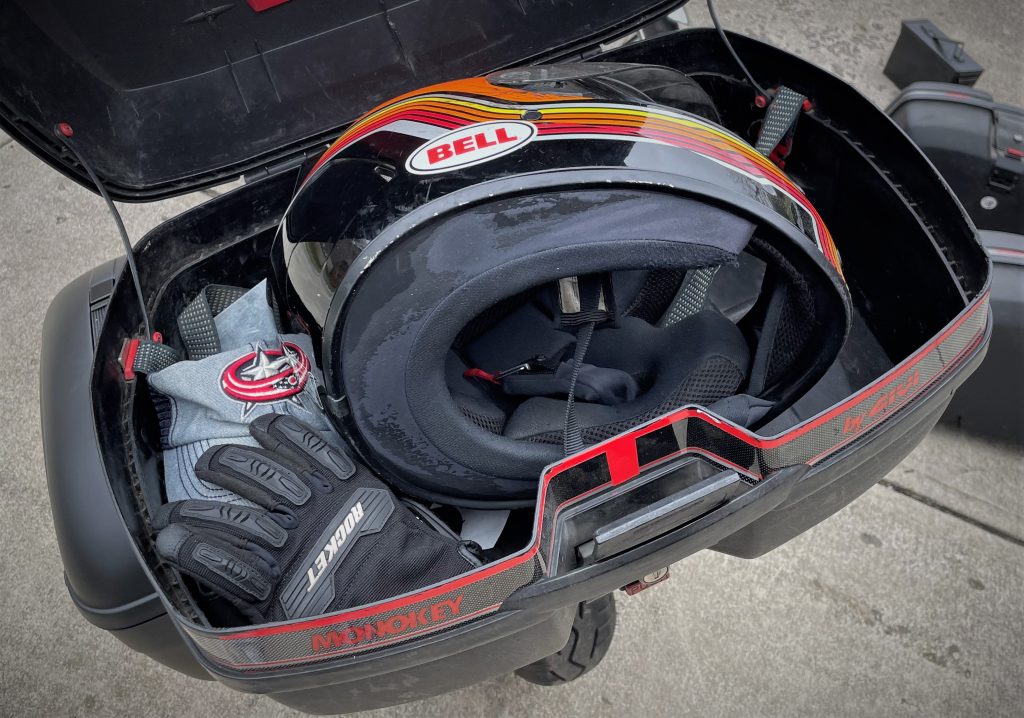
It’s a good idea to lay out all the gear you’ll typically carry on a ride, and determine the relative size of the luggage you’ll need to carry it all in—keep reading for a handy luggage sizing tip later on in this article.
Also, don’t overlook the importance of accessing the gear you’ve packed. After all, what good is carrying all that stuff, if you can’t get to it easily. You can see this point demonstrated in these two pics:
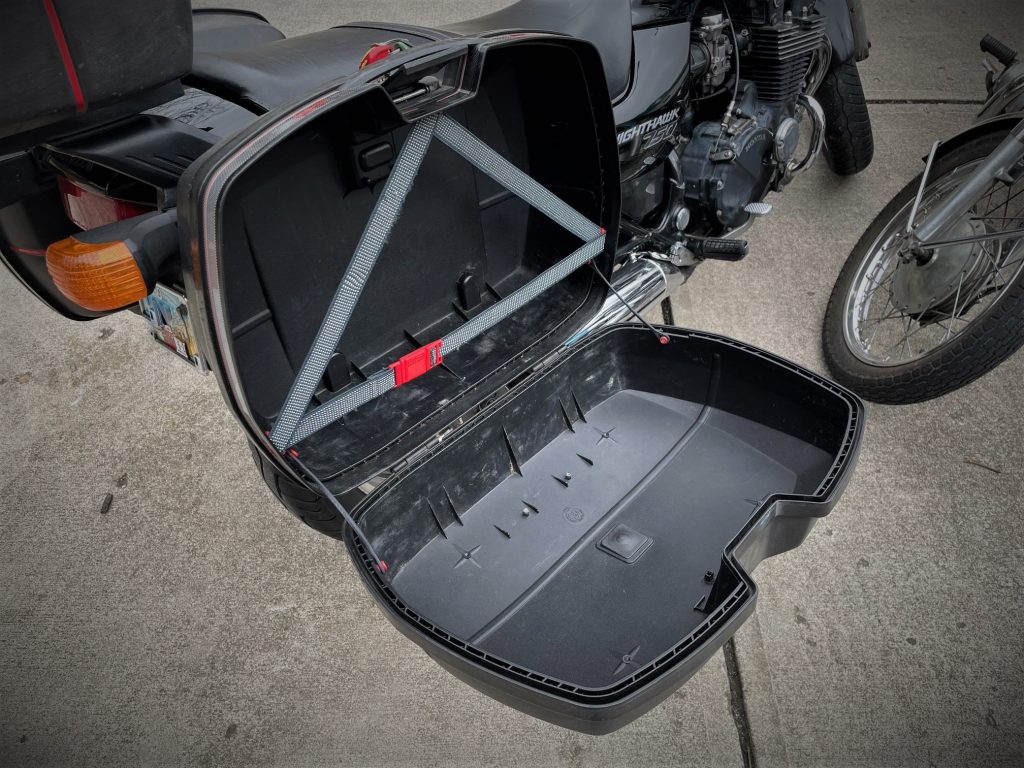
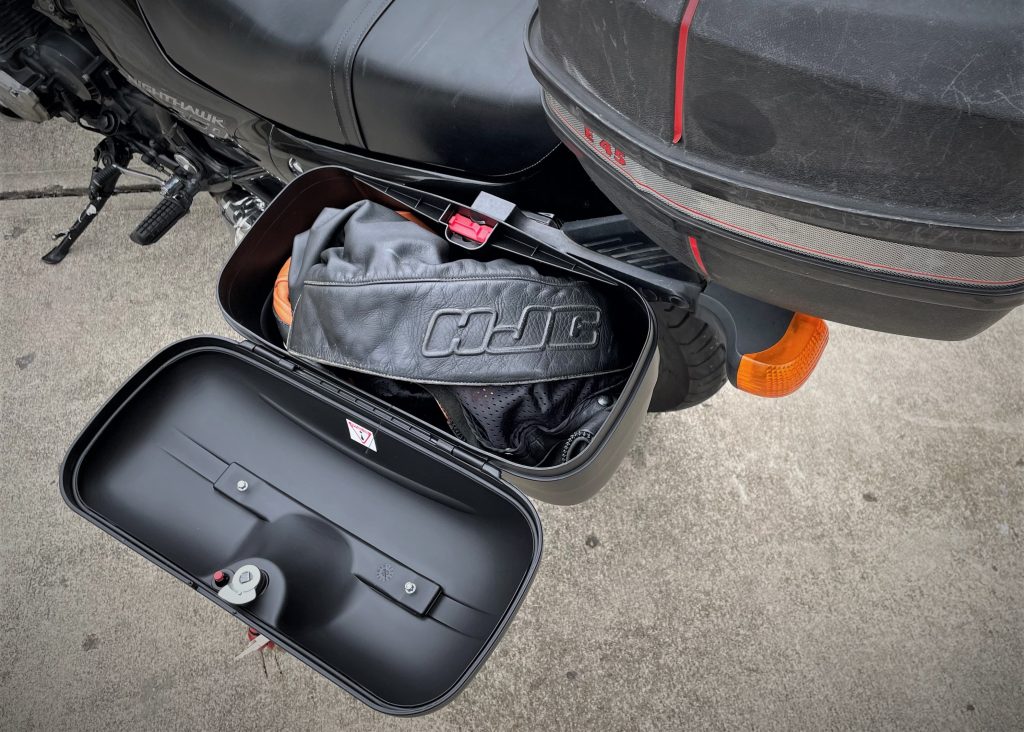
What Kind of Bike You’ve Got
Before moving much further though, take a good, long look at your motorcycle—because some accept luggage better than others. The good news is, that pretty much any bike can be outfitted with some cargo-carrying capability, you just may need some out-of-the-box (pun!) thinking to make it happen.
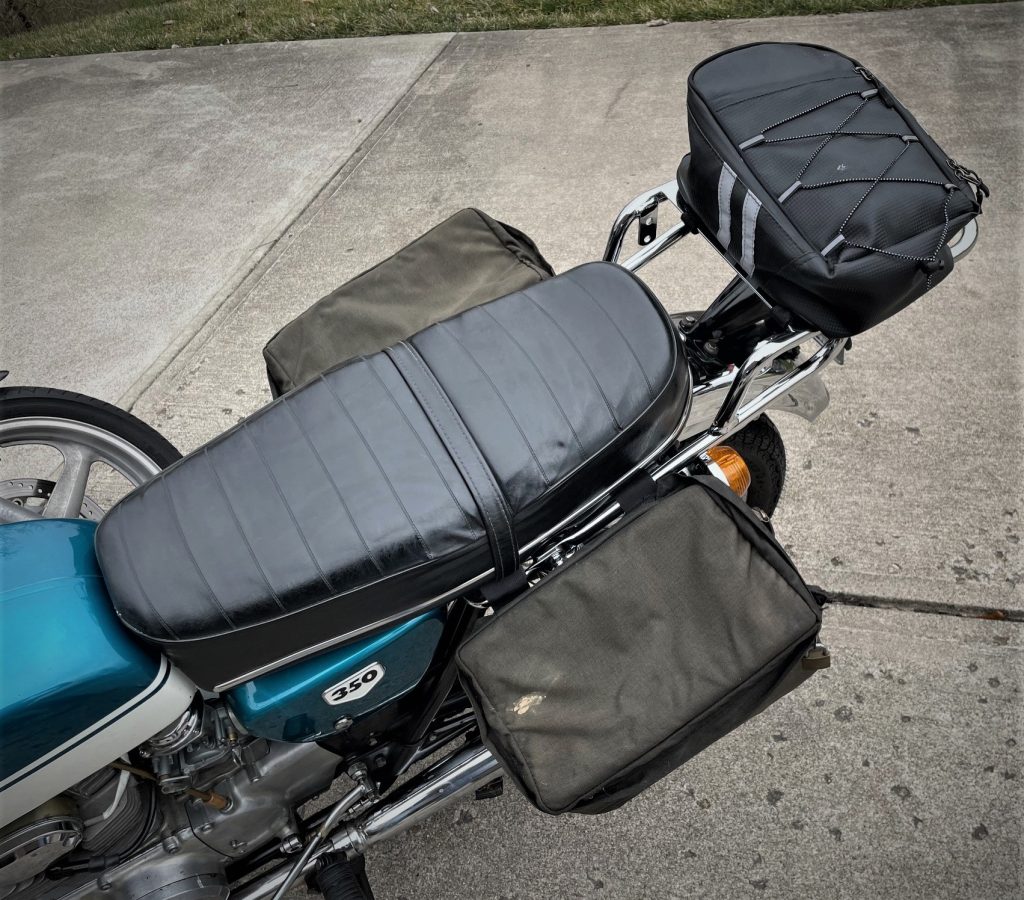
Some bikes come with accommodations for luggage right from the factory, while others may require a separate case mounting kit. Other times, you may need to install an aftermarket motorcycle luggage rack or perhaps an extra set of footman loops to help you secure all your gear.
Here’s another big factor to think about: Before you purchase a set of saddlebags or hard luggage for your motorcycle, understand how it will affect the bike.
When mounted at the rear, heavy luggage can take weight off the front fork—which significantly impacts the motorcycle’s braking and handling characteristics. This can often be remedied with a simple rear shock adjustment, but is nonetheless important to consider when carrying luggage (or another rider).
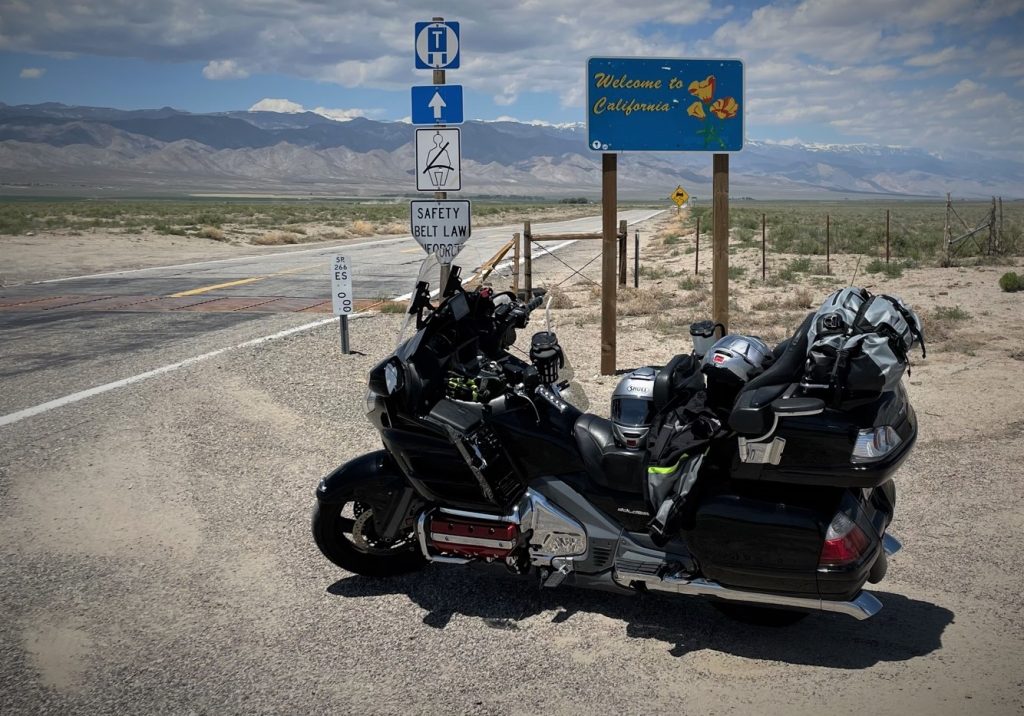
Luggage, particularly hard cases, will also likely increase the width of the motorcycle, which can be especially troublesome when navigating crowded city streets. And depending on the design of your saddlebags/cases, it can make trailering your bike a bit more cumbersome.
Perhaps most importantly, side bags can interfere with suspension movement, contact hot exhaust parts, and get pulled into your rear sprocket, so making sure the luggage system will play nice with your bike is a big, big part of the decision making process.
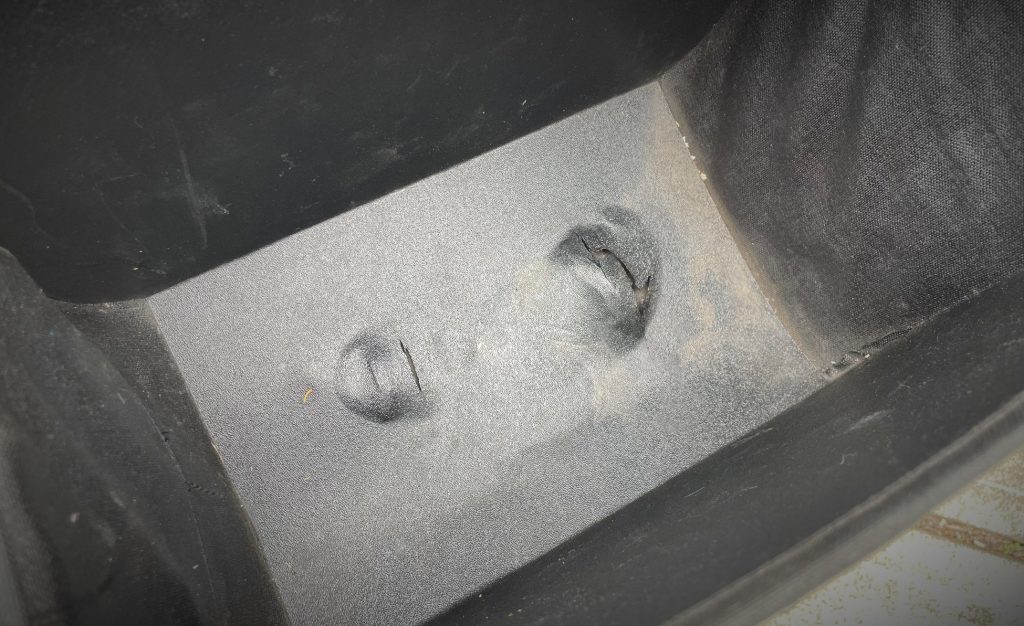
What Kind of Riding Will You Be Doing?
This is an obvious question, but a nonetheless important one: Where (and how) will you be riding your bike?
It goes without saying that dirt bikes will have different luggage demands than a large V-twin cruiser—but what about a bike that serves a more hybrid role?
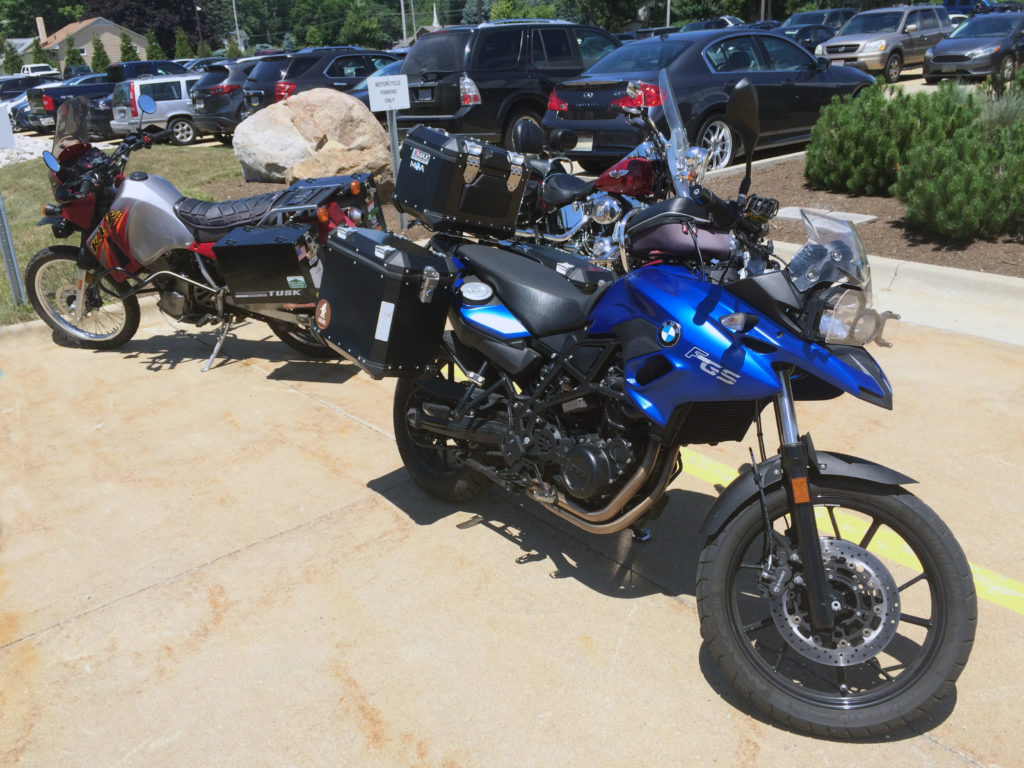
In other words, you have to weigh several considerations and make the appropriate tradeoffs. For example:
- Durability often comes at the expense of weight
- Size often comes at the expense of maneuverability
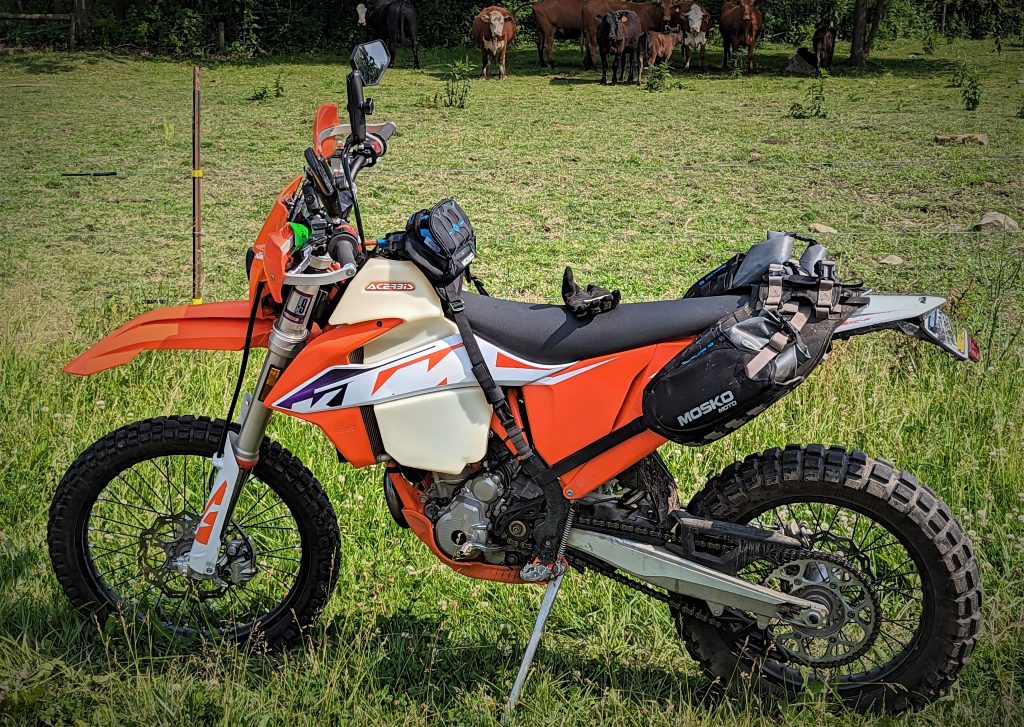
You’ll also need to consider Mother Nature. If all-season, all-weather riding is your thing, then moisture ingress is a major concern. And if you’re carrying delicate or expensive stuff like a laptop or GPS unit, then you’ll also want to think about locks and security.
Pros & Cons of Soft vs. Hard Cases
Perhaps the biggest question you’ll have to answer when buying luggage for your motorcycle is, should you go with hard- or soft-sided cases? Again, motorcycle luggage can be a game of tradeoffs, so here are some pros and cons of each.
Hard Cases
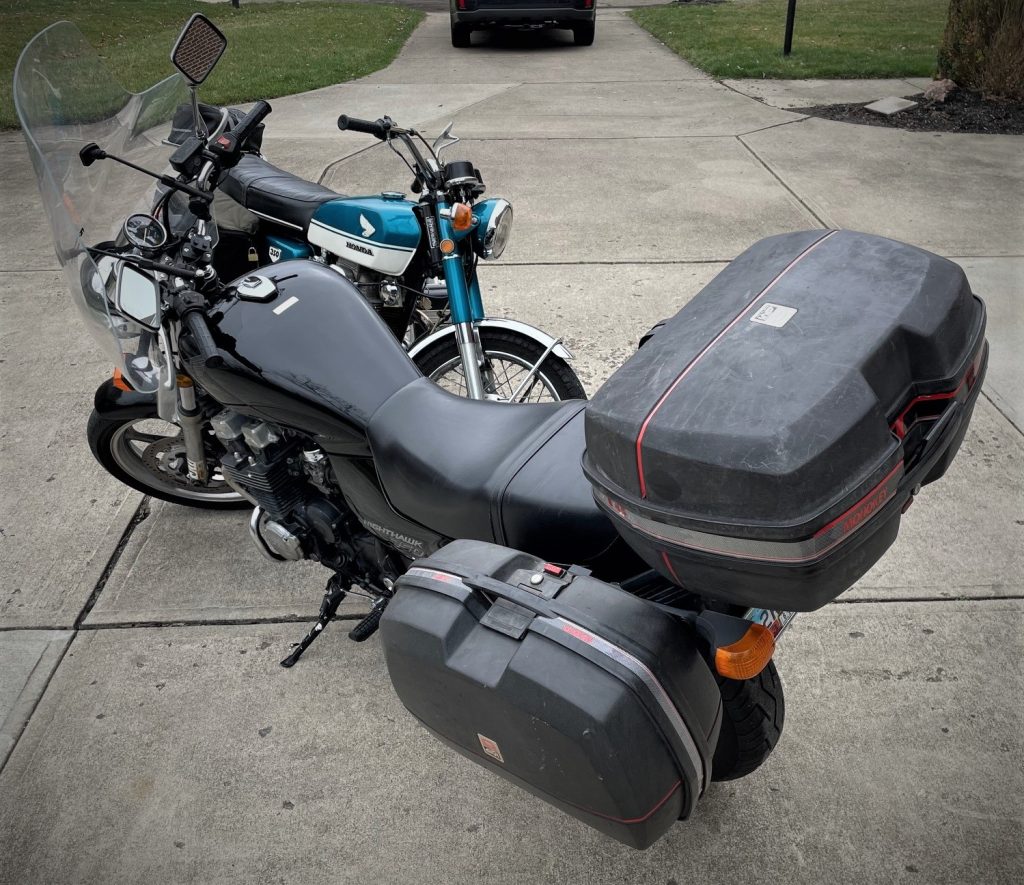
Hard cases offer plenty of upside. For starters, they tend to be more secure and tamper resistant. That can be particularly helpful if you’ve got sensitive (read: expensive) stuff inside. Hard cases are also usually a tad more weather resistant too, employing large rubber gaskets and seals to keep muck and moisture out.
The tradeoff is both size and weight, which again can have a big impact on maneuverability. Hard cases also can require a bit more complexity to mount, usually with a complement of brackets and hardware.
Be careful though, not all hard cases are equal, specifically in the durability department. A nice molded plastic set of cases can be fine for street riding, but if you’re heading down a trail or fire road, you’ll likely want a set of more robust steel or aluminum cases that can withstand an occasional impact or drop.
Oh, one more thing, hard cases and the requisite mounting system usually aren’t the cheapest options.
Soft Bags
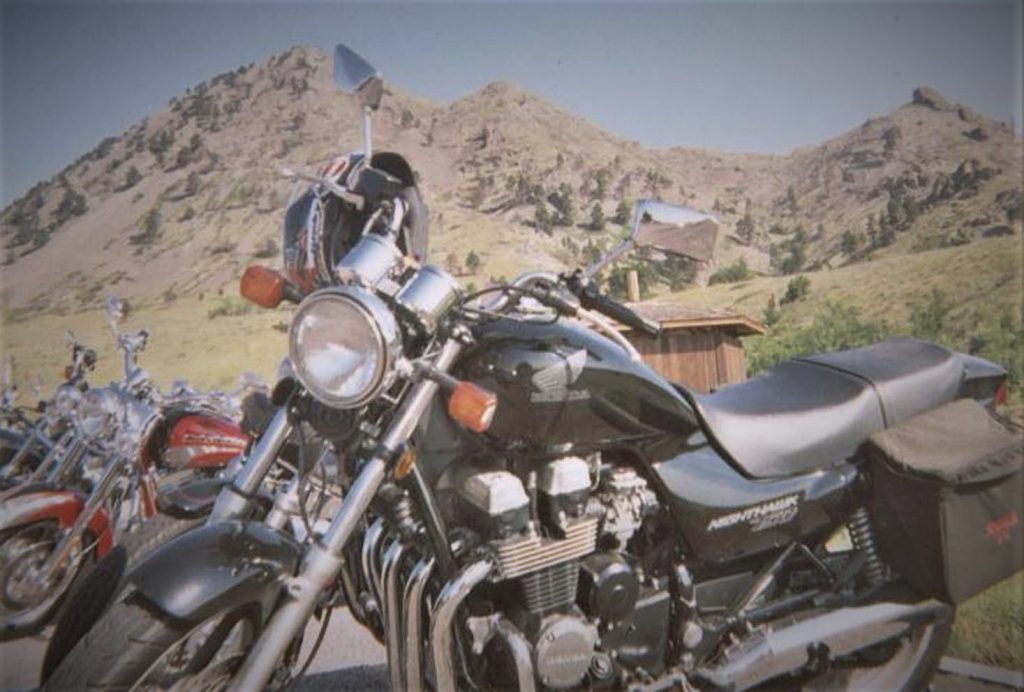
Soft bags can offer a lot of flexibility—pun intended. They can typically be slipped on and off much easier than a dedicated set of hard luggage. They tend to be lighter and more compact as well, which can be a huge benefit on crowded streets and commuter traffic.
A good universal set of saddle bags often installs without much need for special bracketry or dedicated mounts either. In fact, for a lot of cases, it’s a simple matter of adjusting some hooks and clips, then cinching the mounting straps taut.
It’s worth pointing out that many soft cases are “soft” in name only, thanks to a semi-rigid inner liner that helps the bag maintain its size and shape, while adding an additional layer of protection from scrapes and moisture.
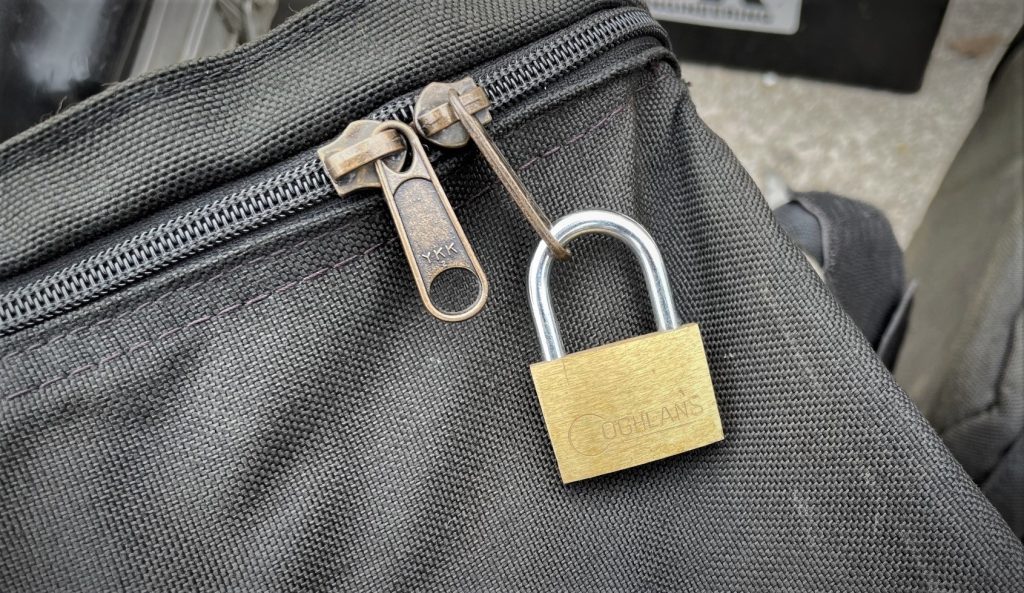
So if you only need to use your luggage occasionally, a set of soft bags may allow you to remove them entirely for typical daily riding. Better still, that also means a single set of bags can often be easily transferred between different bikes, which is a real benefit if you’ve got multiple rides in your stable.
And since you’re not installing a bunch of fancy brackets, soft bags might be the most affordable option.
The obvious tradeoff with soft bags is security and protection—from both Mother Nature and those with nefarious intent. So again, you’ve got to weigh your needs accordingly.
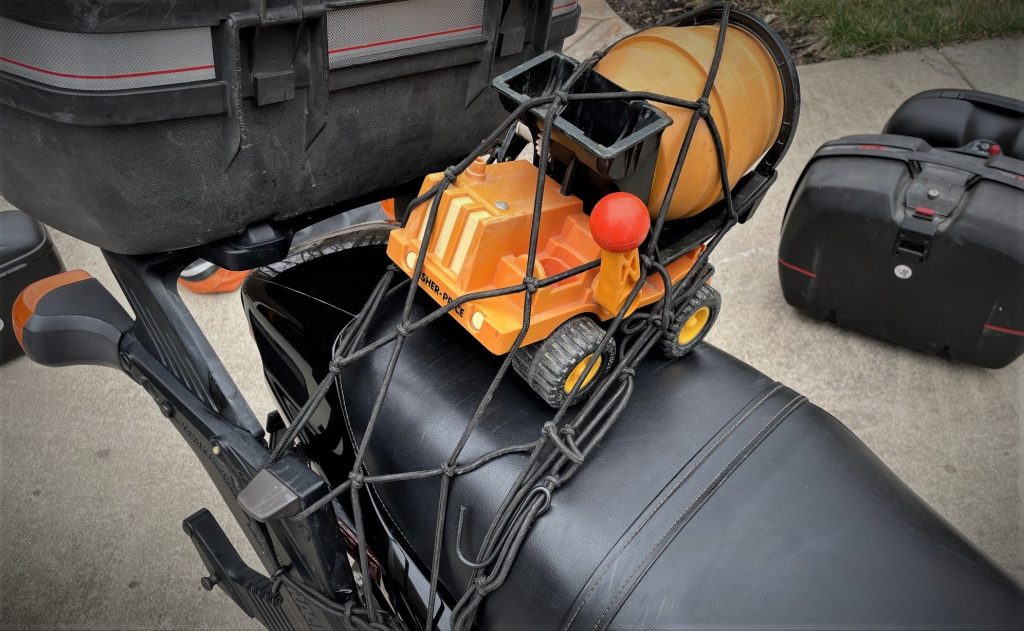
A Tip to Practical Case & Saddlebag Dimensions
When ordering a set of saddlebags or motorcycle luggage, it might be tough to visualize how much space you’re actually getting. More importantly, how will those cases look in the real world when they’re mounted to the bike?
Well, if you’re handy with a glue gun, tape measure, and box cutter—it’s pretty easy to find out.
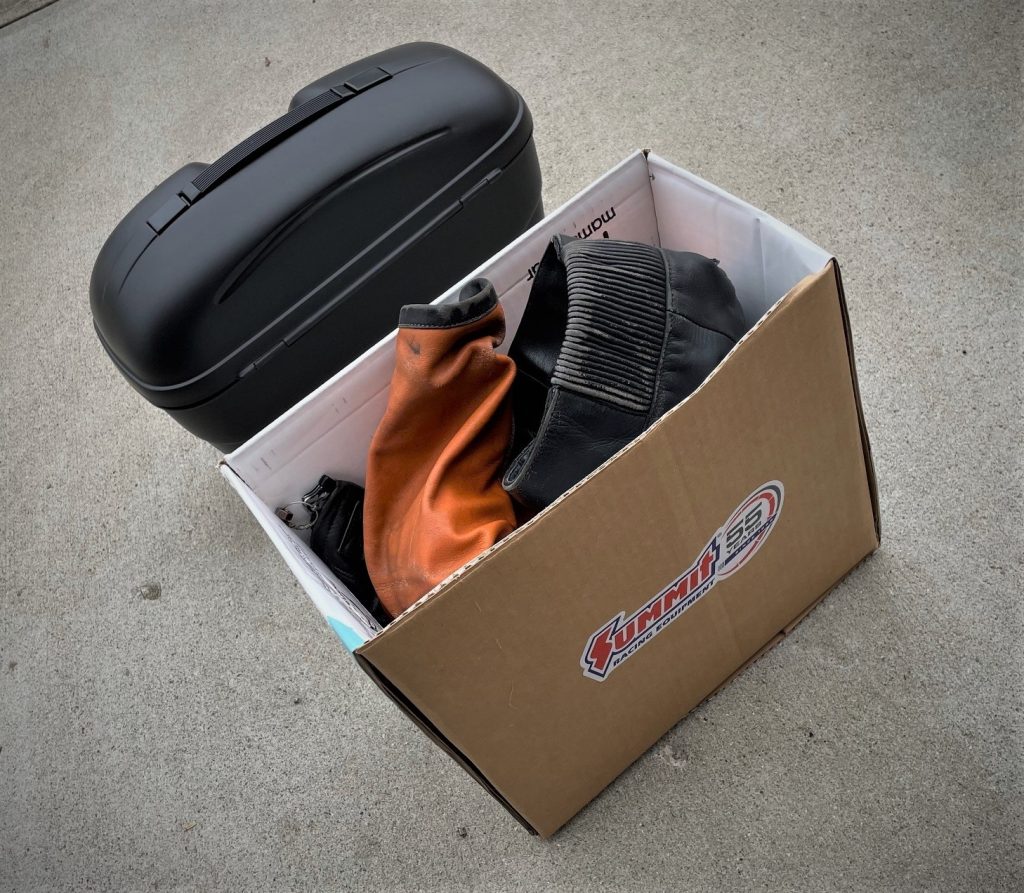
More often than not, the case manufacturer will give you internal and external dimensions of the case or saddlebag you’re interested in. Then, you can translate those dimensions to some cardboard and simply fabricate a mockup of the case.
That’ll give you a real-world idea of what space you’ll be adding with those cases—and that’s particularly helpful if you need to carry a specific object, like say a helmet, tool, tent, or other vital piece of equipment.
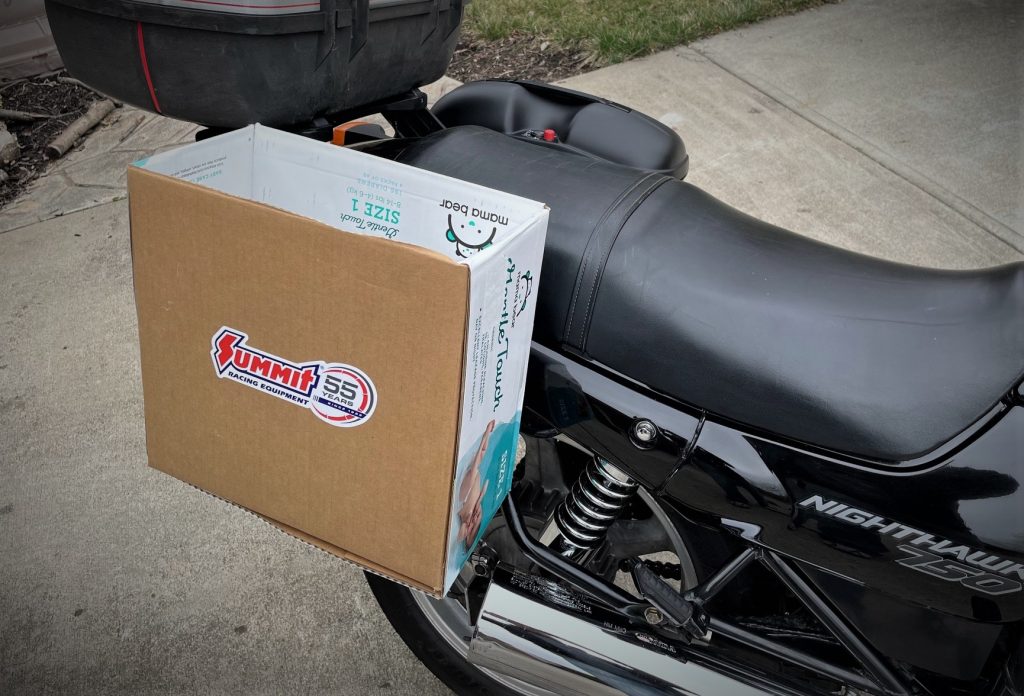
More importantly, using a set of mockup cases can show you how your bike’s dimensions will change. That can be an invaluable detail to know if you need to park your bike in a cramped space or live in an area where traffic filtering is permitted.
DIY Motorcycle Luggage Options
Speaking of fabricating, if you’re comfortable working with tools, there’s a do-it-yourself alternative to store-bought luggage too.
Do an online search on the topic and you’ll find no shortage of savvy fabricators who’ve built smart motorcycle cargo solutions out of old suitcases, unused tool boxes, shipping containers, and beyond.
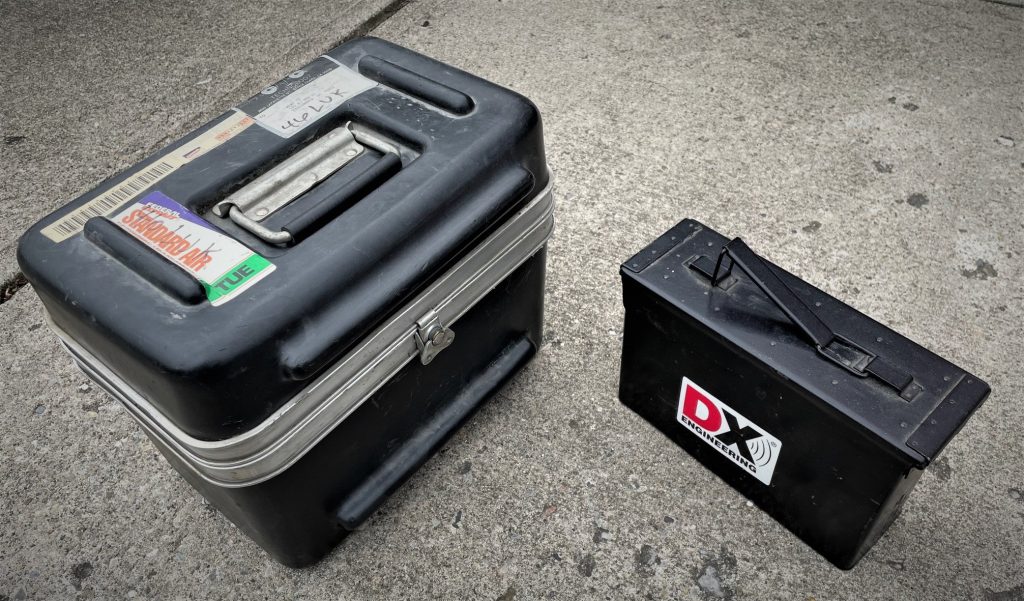
The caveat here though, is this route requires skill, effort, and the right materials. And securing a homemade top box or side cases can be tricky if you don’t already have a set of luggage racks or mounts on your bike.
If you’re interested in the DIY approach, make sure to account for all the considerations already discussed—including things like exhaust clearance, suspension travel, and sprocket/chain movement.
Another thing to think about when-repurposing luggage is rust and corrosion—make sure to use stainless hardware and cover everything with a quality rust preventer coating too.
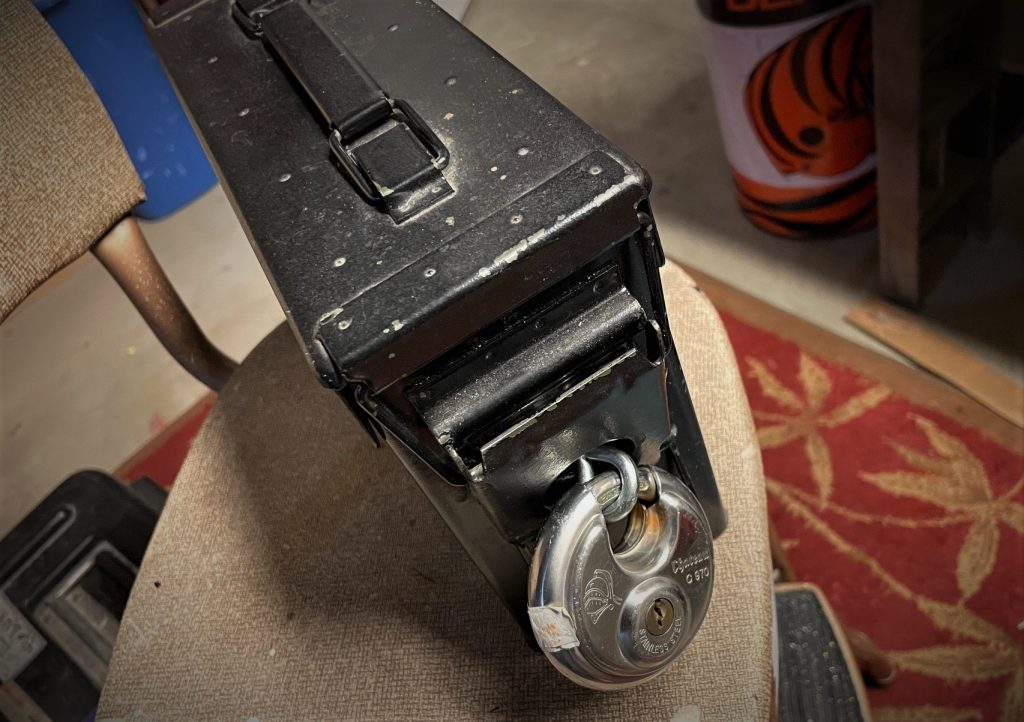
What Motorcycle Luggage is Best for Your Bike?
The answer to that question is a rock solid “it depends.”
Again, it’s often a game of tradeoffs, weighing considerations like weight, size, space, and security (price too, of course).
Regardless of what luggage you choose, remember that it is an investment and one you shouldn’t take lightly—after all, you don’t want your gear to be scattered along the interstate. A good set of saddlebags or cases should last the life of the bike and give you thousands of miles of cargo-carrying capability.
So choose wisely, then get out there and ride!
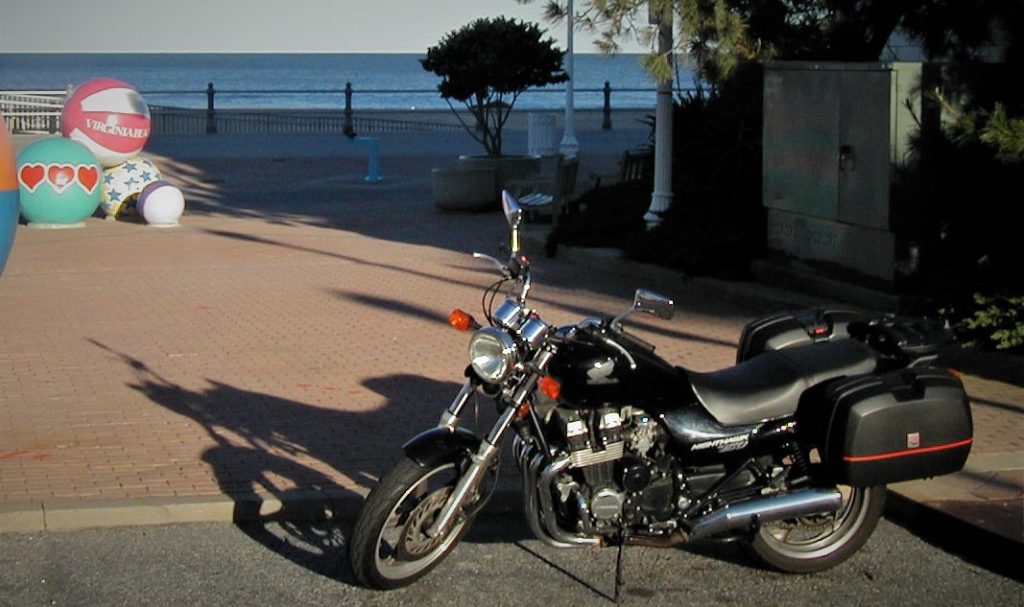

Comments